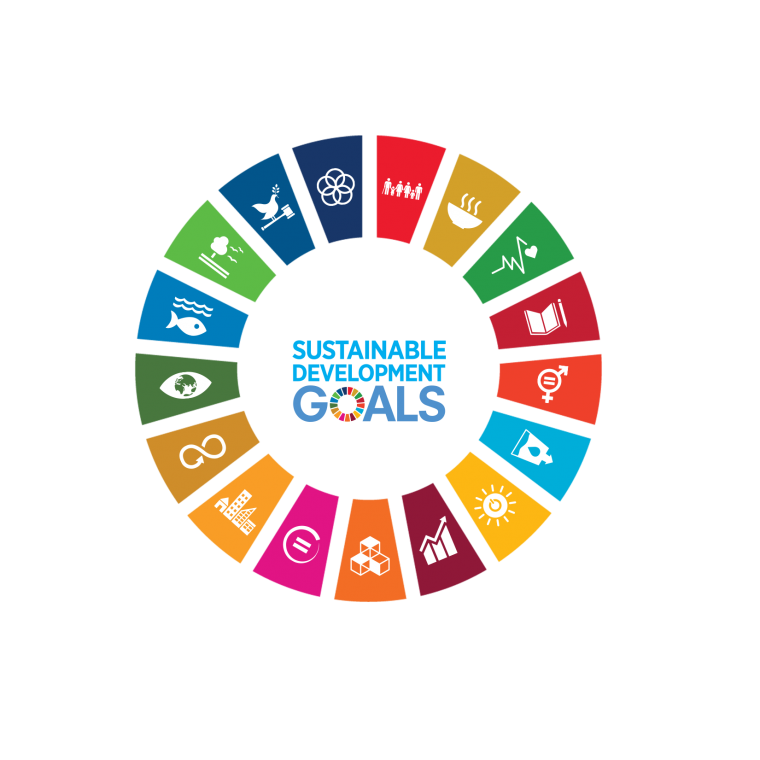An Effort to Increase the Role of Halal Tourism: West Nusa Tenggara Islamic Center
DOI:
https://doi.org/10.18196/jerss.v6i1.13651Keywords:
Islamic Center, West Nusa Tenggara, Halal Tourism, Strategy, SWOTAbstract
Recently, religious tourism has attracted the attention of various parties because of the high interest of Muslim tourists. West Nusa Tenggara (NTB) is one of the provinces that carry religious or halal tourism. It was proven by attaining the halal tourism destination award by the West Nusa Tenggara Islamic Center in 2015. However, the West Nusa Tenggara Islamic Center still lacks development and literacy, especially tourism. Therefore, the motivation of this research is to find alternative strategies that might be used for the development process and increase literacy. By interviewing four respondents, the authors uncovered alternative strategies using SWOT analysis. The five strategies might be beneficial: collaborating with stakeholders, creating new attractions, marketing destinations, improving service quality, and strengthening the destination concept.References
Amalyah, R., Hamid, D., & Hakim, L. (2016). Peran Stakeholder Pariwisata dalam Pengembangan Pulau Samalona Sebagai Destinasi Wisata Bahari. Jurnal Administrasi Bisnis, 37(1), 158-163. Retrieved from http://administrasibisnis.studentjournal.ub.ac.id/index.php/jab/article/view/1439
Anggraini, I., & Dewanti, D. S. (2020). The Effect of Halal Foods Awareness on Purchase Decision with Religiosity as a Moderating Variable. Journal of Economics Research and Social Sciences, 4(1), 17-29. https://doi.org/10.18196/jerss.040116
Ashton, A. S. (2014). Tourist destination brand image development—an analysis based on stakeholders’ perception. Journal of Vacation Marketing, 20(3), 279–292. https://doi.org/10.1177/1356766713518061
Battour, M., & Ismail, M. N. (2016). Halal tourism: Concepts, practises, challenges and future. Tourism Management Perspectives, 19, 150–154. https://doi.org/10.1016/j.tmp.2015.12.008
Chookaew, S., chanin, O., Charatarawat, J., Sriprasert, P., & Nimpaya, S. (2015). Increasing Halal Tourism Potential at Andaman Gulf in Thailand for Muslim Country. Journal of Economics, Business and Management, 3(7), 739–741. https://doi.org/10.7763/joebm.2015.v3.277
Coelho, F. J., Evanschitzky, H., Sousa, C. M. P., Olya, H., & Taheri, B. (2021). Control mechanisms, management orientations, and the creativity of service employees: Symmetric and asymmetric modeling. Journal of Business Research, 132, 753–764. https://doi.org/10.1016/j.jbusres.2020.10.055
Dolnicar, S., Grün, B., Leisch, F., & Schmidt, K. (2013). Required Sample Sizes for Data-Driven Market Segmentation Analyses in Tourism. Journal of Travel Research, 53(3), 296–306. https://doi.org/10.1177/0047287513496475
Ferdiansyah, L. F., Sulhaini, S., & Athar, H. S. (2020). Penerapan Konsep Pariwisata Halal Pada Citra Merek Pulau Lombok. JMM Unram - Master of Management Journal, 9(4a), 55–67. https://doi.org/10.29303/jmm.v9i4a.619
Ferrario, F. F. (1979). The Evaluation of Tourist Resources: an Applied Methodology. Journal of Travel Research, 17(4), 24–30. https://doi.org/10.1177/004728757901700405
Frochot, I. (2005). A benefit segmentation of tourists in rural areas: a Scottish perspective. Tourism Management, 26(3), 335–346. https://doi.org/10.1016/j.tourman.2003.11.016
Frochot, I., & Morrison, A. M. (2000). Benefit Segmentation: A Review of Its Applications to Travel and Tourism Research. Journal of Travel & Tourism Marketing, 9(4), 21–45. https://doi.org/10.1300/J073v09n04_02
Hartarto, R. B., Wardani, D. T. K., & Azizurrohman, M. (2021). A Qualitative Study of Conditional Cash Transfer and Education Aspirations: Evidence from Yogyakarta. Journal of Social Service Research, 47(6), 776–785.. https://doi.org/10.1080/01488376.2021.1918314
Hassan, S. S. (2000). Determinants of Market Competitiveness in an Environmentally Sustainable Tourism Industry. Journal of Travel Research, 38(3), 239–245. https://doi.org/10.1177/004728750003800305
Kasih, W. C. (2019). Analisis Pengembangan Destinasi Wisata Religi pada Islamic Center Kalimantan Timur di Kota Samarinda. Jurnal Administrasi Bisnis Fisipol Unmul, 7(4), 424-437. https://doi.org/10.54144/jadbis.v7i4.2748
Kotler, P., & Keller, K. L. (2016). Marketing Management (15th Ed). Harlow, Essex Pearson Education.
Mayo, E.J., & Jarvis, L. P. (1981). The Psychology of Leisure Travel: Effective Marketing and Selling of Travel Services. Boston: CBI Publishing Company, Inc. https://doi.org/10.1177%2F004728758202000313
Mihalič, T. (2000). Environmental management of a tourist destination. Tourism Management, 21(1), 65–78. https://doi.org/10.1016/s0261-5177(99)00096-5
Mok, C., & Iverson, T. J. (2000). Expenditure-based segmentation: Taiwanese tourists to Guam. Tourism Management, 21(3), 299–305. https://doi.org/10.1016/S0261-5177(99)00060-6
Nugroho, A., & Burhani, I. (2019). Analisis Pengaruh Brand Equity Terhadap Purchase Intention pada Produk Private Label Studi Kasus: Private Label Carrefour. Jurnal Akuntansi, 4(1), 899-920. https://doi.org/10.30736/jpensi.v4i1.216
Pearce, D. G. (1997). Competitive Destination Analysis in Southeast Asia. Journal of Travel Research, 35(4), 16–24. https://doi.org/10.1177/004728759703500403
Razalli, M. R. (2018). Managing Halal certification supply chain: Determinants success factors framework for a hotel performance. International Journal of Supply Chain Management, 7(1). Retrieved from https://ojs.excelingtech.co.uk/index.php/IJSCM/article/view/2010
Sellick, M. C. (2004). Discovery, Connection, Nostalgia. Journal of Travel & Tourism Marketing, 17(1), 55–71. https://doi.org/10.1300/J073v17n01_04
Soffan, M., & Holis, M. (2020). Studi Kelayakan dan Pengembangan Tempat Pelelangan Ikan (TPI) Branta Sebagai Pasar Ikan Wisata Bahari di Pamekasan. Jurnal Sosial Ekonomi Kelautan Dan Perikanan, 15(2), 199-212. https://doi.org/10.15578/jsekp.v15i2.7825
Sumarto, H. S. (2009). Inovasi, Partisipasi, dan Good Governance: 20 Prakarsa Inovatif dan Partisipatif di Indonesia. Jakarta: Yayasan Pustaka Obor Indo.
Sung, H. Y., Morrison, A. M., & O'Leary, J. T. (2000). Segmenting the adventure travel market by activities: From the North American industry providers' perspective. Journal of Travel and Tourism Marketing, 9(4), 1-20. https://doi.org/10.1300/J073v09n04_01
Suryani, T. (2008). Perilaku Konsumen implikasi pada strategi pemasaran. Jakarta: Erlangga.
Suwena, I. K., & Widyatmaja, I. G. N. (2017). Pengetahuan Dasar Ilmu Pariwisata. Pustaka Larasan
Walidaen, M. B., Utami, N. W. F., & Yusiana, L. S. (2017). Perencanaan Taman Islam pada Lansekap Islamic Center Provinsi NTB. Jurnal Arsitektur Lansekap, 3(1), 77-86. https://doi.org/10.24843/jal.2017.v03.i01.p09
Williamson, K., Given, L. M., & Scifleet, P. (2018). Qualitative data analysis. Research Methods, 453–476. https://doi.org/10.1016/b978-0-08-102220-7.00019-4
Downloads
Published
How to Cite
Issue
Section
License
License
You are free to:
- Share — copy and redistribute the material in any medium or format.
- Adapt — remix, transform, and build upon the material for any purpose, even commercially.
The licensor cannot revoke these freedoms as long as you follow the license terms.
Under the following terms:
- Attribution — You must give appropriate credit, provide a link to the license, and indicate if changes were made. You may do so in any reasonable manner, but not in any way that suggests the licensor endorses you or your use.
- ShareAlike — If you remix, transform, or build upon the material, you must distribute your contributions under the same license as the original.
- No additional restrictions — You may not apply legal terms or technological measures that legally restrict others from doing anything the license permits.

This work is licensed under a Creative Commons Attribution-ShareAlike 4.0 International License.

